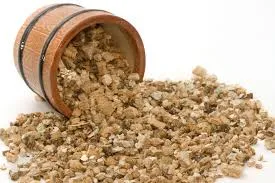ಡಿಸೆ . 11, 2024 09:19 Back to list
Metallurgical Supplier for High-Performance Refractory Materials in Industrial Applications
Understanding Refractory Materials in Metallurgy A Guide for Suppliers
Refractory materials play a crucial role in the metallurgy industry, serving as exceptional heat-resistant products that withstand extreme temperatures, chemical corrosion, and physical wear. With an increasing demand for high-performance materials in metal processing, the role of refractory material suppliers has become more vital than ever. This article delves into the significance of refractory materials in metallurgy, their types, properties, and what suppliers should consider to thrive in this competitive landscape.
The Significance of Refractory Materials
Refractory materials are indispensable in smelting, casting, and refining metals. They are employed in furnaces, kilns, and reactors where temperatures can exceed 1000°C. The main functions of these materials include
1. Thermal Insulation Refractories minimize heat loss, ensuring efficient energy use in metallurgical processes. They are essential in maintaining the necessary temperatures for various operations. 2. Chemical Resistance These materials are designed to resist corrosion from molten metals, slags, gases, and other aggressive substances encountered during metal processing.
3. Structural Integrity Refractories provide structural support under extreme conditions, ensuring operational stability and safety.
The importance of refractories is further underscored by their impact on product quality and overall process efficiency, making them a fundamental concern for metallurgical operations.
Types of Refractory Materials
Refractory materials are generally classified into several categories, each tailored to specific applications within the metallurgy sector
1. Acidic Refractories Made from silica, these materials are suitable for environments that contain acidic slags and gases. They excel in high-temperature applications but are limited in reducing atmospheres.
2. Basic Refractories Composed of materials like magnesia and dolomite, basic refractories are ideal for environments that primarily involve basic slags.
3. Neutral Refractories These refractories, such as alumina and carbon, can resist both acidic and basic conditions, making them versatile for a variety of metallurgical applications.
The diversity of refractory materials allows metallurgy suppliers to cater to a broad range of industry needs, from non-ferrous metal production to ferrous alloys.
refractory material metallurgy supplier

Properties of Refractory Materials
Several key properties characterize effective refractory materials
- High Melting Point This is perhaps the most critical attribute, ensuring that refractories maintain structural integrity under extreme heat. - Low Thermal Conductivity Good insulation properties help conserve energy and protect equipment from thermal damage. - Mechanical Strength Refractories must withstand mechanical stress during processing, requiring high compressive and flexural strength. - Thermal Shock Resistance Ability to handle rapid temperature changes without cracking is essential for efficient operation.
As a supplier, understanding these properties enables better sourcing and selection of materials that meet specific industry applications.
Supplier Strategies
For suppliers of refractory materials, a few strategies can help to enhance their market presence and customer satisfaction
1. Quality Assurance Implementing stringent quality control measures ensures that products meet industry standards and client specifications.
2. Customization Offering tailored solutions based on client needs can differentiate suppliers in a competitive market. This might include custom formulations or composite materials for specific applications.
3. Innovation and Research Investing in R&D can lead to the development of new materials that enhance performance, reduce costs, or increase longevity, giving suppliers a competitive edge.
4. Sustainability Incorporating sustainable practices in sourcing and manufacturing refractory materials can appeal to environmentally conscious clients and align with global sustainability initiatives.
5. Customer Relationship Management Building robust relationships with clients through excellent service, technical support, and responsiveness can lead to lasting partnerships and repeat business.
Conclusion
Refractory materials are integral to modern metallurgy, providing solutions that enhance efficiency and safety in metal processing. For suppliers, understanding the specific needs of the metallurgy sector and delivering high-quality, durable products can position them as key players in this essential industry. By focusing on innovation, quality, and customer relationships, refractory material suppliers can navigate the complexities of the market and contribute significantly to the advancements in metallurgy.
-
High-Purity Graphitized Petroleum Coke & Low Nitrogen Recarburiser
NewsAug.21,2025
-
High-Performance Fe-C Composite Pellets for BOF
NewsAug.19,2025
-
Tundish Dry Vibrator: Enhance Refractory Life & Casting Efficiency
NewsAug.18,2025
-
Building Material for Round Wall Exporters: Quality & Durable
NewsAug.17,2025
-
Low Nitrogen Graphitized Petroleum Coke | High Purity Recarburiser
NewsAug.16,2025
-
Premium First Bauxite Exporters & Suppliers Worldwide
NewsAug.15,2025
